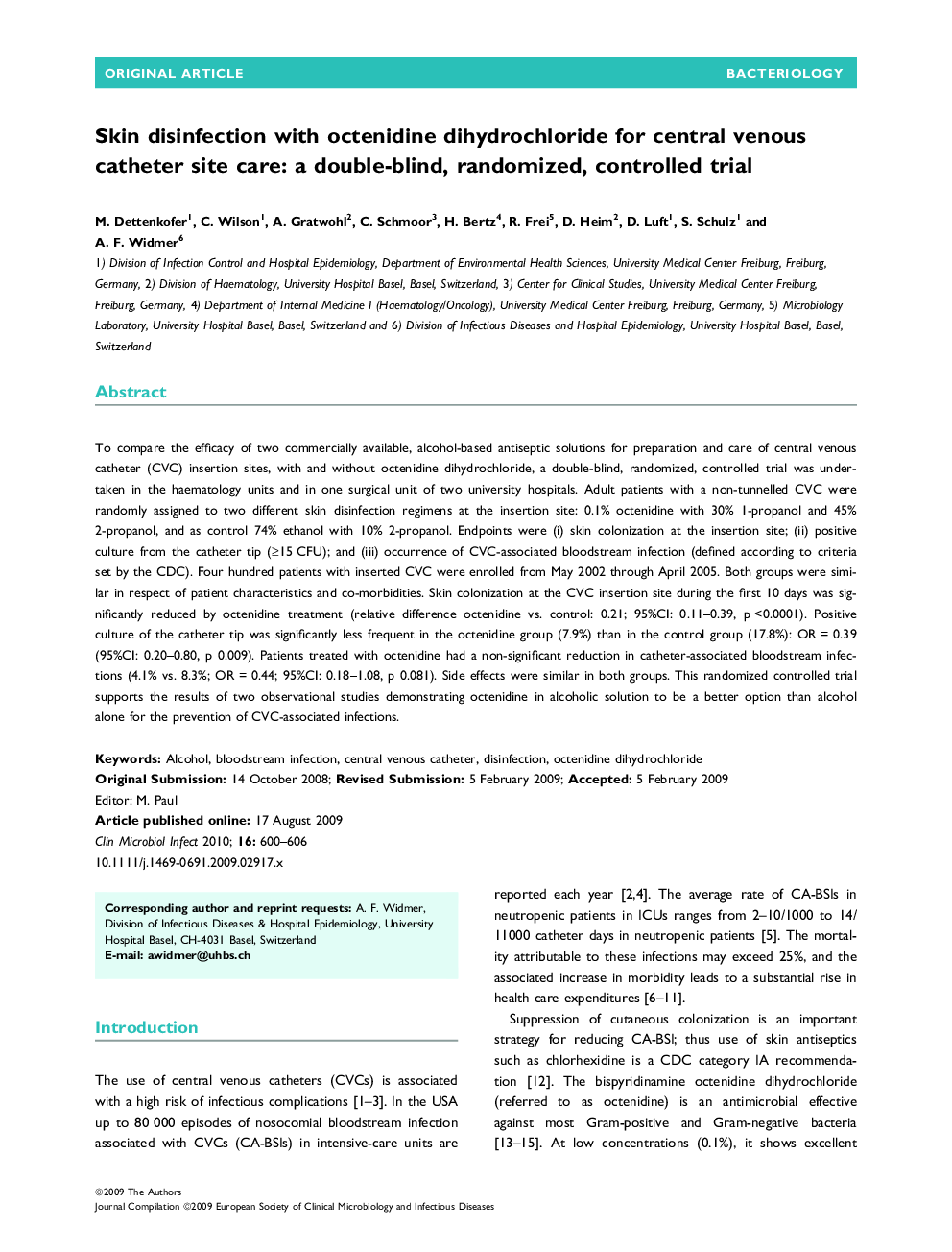| Article ID | Journal | Published Year | Pages | File Type |
|---|---|---|---|---|
| 3397242 | Clinical Microbiology and Infection | 2010 | 7 Pages |
To compare the efficacy of two commercially available, alcohol-based antiseptic solutions for preparation and care of central venous catheter (CVC) insertion sites, with and without octenidine dihydrochloride, a double-blind, randomized, controlled trial was undertaken in the haematology units and in one surgical unit of two university hospitals. Adult patients with a non-tunnelled CVC were randomly assigned to two different skin disinfection regimens at the insertion site: 0.1% octenidine with 30% 1-propanol and 45% 2-propanol, and as control 74% ethanol with 10% 2-propanol. Endpoints were (i) skin colonization at the insertion site; (ii) -positive culture from the catheter tip (≥15 CFU); and (iii) occurrence of CVC-associated bloodstream infection (defined according to criteria set by the CDC). Four hundred patients with inserted CVC were enrolled from May 2002 through April 2005. Both groups were similar in respect of patient characteristics and co-morbidities. Skin colonization at the CVC insertion site during the first 10 days was significantly reduced by octenidine treatment (relative difference octenidine vs. control: 0.21; 95%CI: 0.11–0.39, p <0.0001). -positive culture of the catheter tip was significantly less frequent in the octenidine group (7.9%) than in the control group (17.8%): OR = 0.39 (95%CI: 0.20–0.80, p 0.009). Patients treated with octenidine had a non-significant reduction in catheter-associated bloodstream infections (4.1% vs. 8.3%; OR = 0.44; 95%CI: 0.18–1.08, p 0.081). Side effects were similar in both groups. This randomized controlled trial supports the results of two observational studies demonstrating octenidine in alcoholic solution to be a better option than alcohol alone for the prevention of CVC-associated infections.
